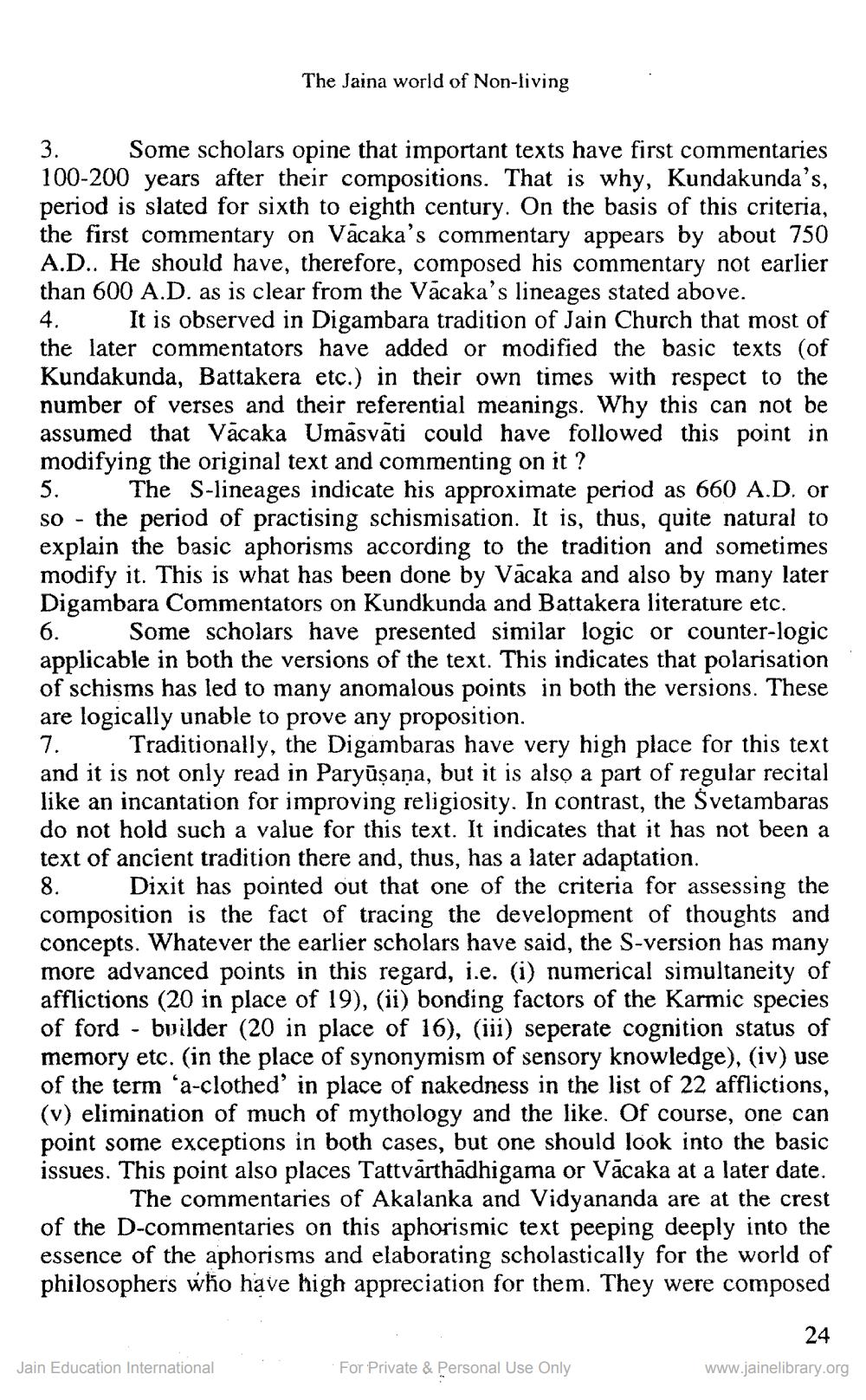________________
The Jaina world of Non-living
6.
3. Some scholars opine that important texts have first commentaries 100-200 years after their compositions. That is why, Kundakunda's, period is slated for sixth to eighth century. On the basis of this criteria, the first commentary on Vacaka's commentary appears by about 750 A.D.. He should have, therefore, composed his commentary not earlier than 600 A.D. as is clear from the Vacaka's lineages stated above. 4. It is observed in Digambara tradition of Jain Church that most of the later commentators have added or modified the basic texts (of Kundakunda, Battakera etc.) in their own times with respect to the number of verses and their referential meanings. Why this can not be assumed that Vacaka Umasvati could have followed this point in modifying the original text and commenting on it ? 5. The S-lineages indicate his approximate period as 660 A.D. or so - the period of practising schismisation. It is, thus, quite natural to explain the basic aphorisms according to the tradition and sometimes modify it. This is what has been done by Vācaka and also by many later Digambara Commentators on Kundkunda and Battakera literature etc.
Some scholars have presented similar logic or counter-logic applicable in both the versions of the text. This indicates that polarisation of schisms has led to many anomalous points in both the versions. These are logically unable to prove any proposition. 7. Traditionally, the Digambaras have very high place for this text and it is not only read in Paryūsaņa, but it is also a part of regular recital like an incantation for improving religiosity. In contrast, the Svetambaras do not hold such a value for this text. It indicates that it has not been a text of ancient tradition there and, thus, has a later adaptation. 8. Dixit has pointed out that one of the criteria for assessing the composition is the fact of tracing the development of thoughts and concepts. Whatever the earlier scholars have said, the S-version has many more advanced points in this regard, i.e. (i) numerical simultaneity of afflictions (20 in place of 19), (ii) bonding factors of the Karmic species of ford - builder (20 in place of 16), (iii) seperate cognition status of memory etc. (in the place of synonymism of sensory knowledge), (iv) use of the term 'a-clothed' in place of nakedness in the list of 22 afflictions, (v) elimination of much of mythology and the like. Of course, one can point some exceptions in both cases, but one should look into the basic issues. This point also places Tattvarthādhigama or Vācaka at a later date.
The commentaries of Akalanka and Vidyananda are at the crest of the D-commentaries on this aphorismic text peeping deeply into the essence of the aphorisms and elaborating scholastically for the world of philosophers who have high appreciation for them. They were composed
24 www.jainelibrary.org
Jain Education International
For Private & Personal Use Only




